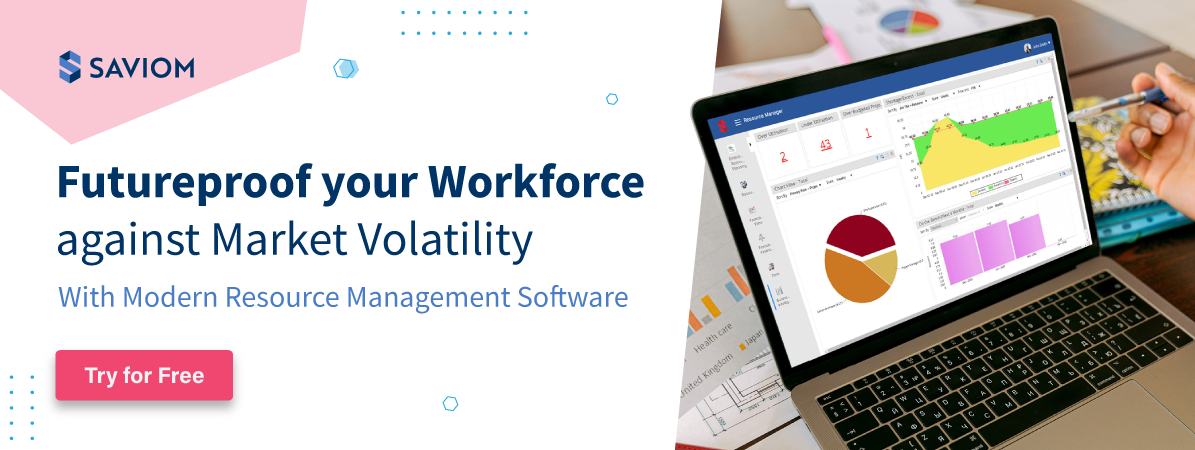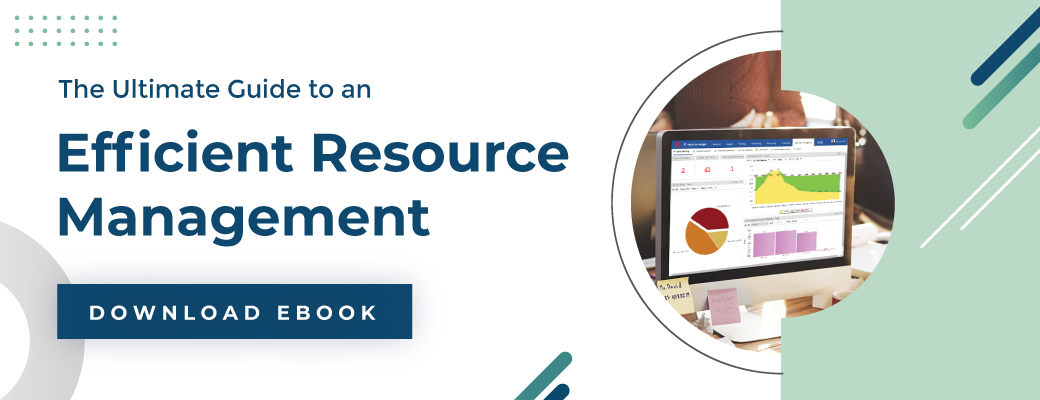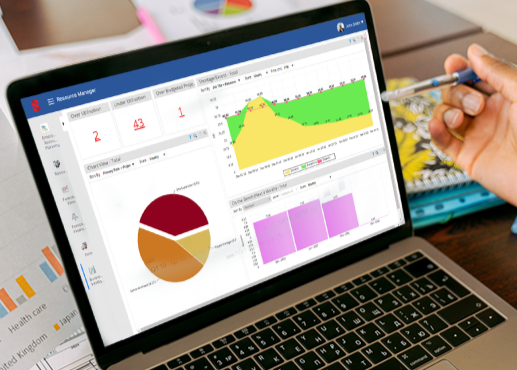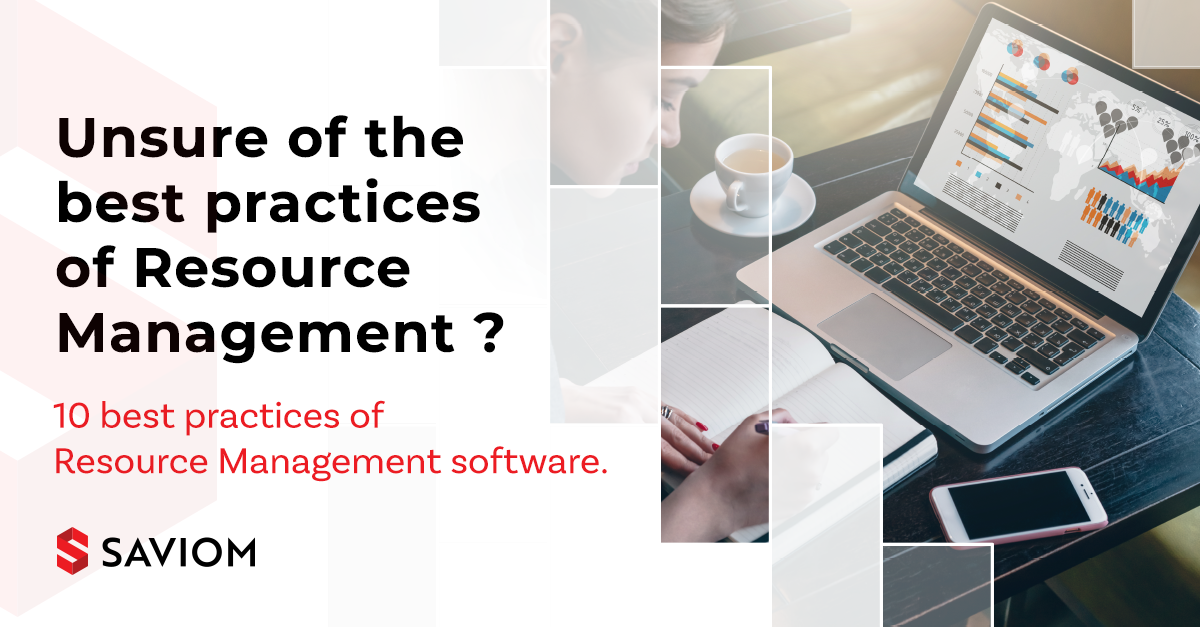The world market is becoming increasingly competitive and unpredictable for one reason or the other. In such an era of uncertainties, companies need to manage their resources efficiently as they are the most significant investment.
Most of these firms are still fighting the challenges of the 2020s using tools developed in the 1990s. They are simply outdated, inefficient, and not helping businesses achieve sustainability and profitability.
An ideal Resource Management Software can significantly reduce resourcing costs, improve profitability, and help you overcome market volatility.
It will substantially reduce project resource cost, increase billable/strategic utilization, beat market volatility, and more.
Over the years, matured organizations have established well-defined practices and frameworks around resource management for business efficiency. A useful resource management tool helps implement these frameworks and methods. It also helps realize the advantages of the resource management process for the organization.

This article discusses some of the Resource and Workforce Management best practices, followed by high performing organizations.
#1. Centralize and Streamline Resource Scheduling and Planning
Resource and Workforce scheduling is the most crucial part of the resource planning process. The benefits of resource scheduling can be realized with appropriate resource planning and scheduling tools.
- First, consolidate all resource-related information within a shared repository to give a single version of truth for the entire organization. Make an informed decision on resource allocation using this centralized data with a suitable resource allocation tool.
- Identify resources with the matching criteria and assign them to the specific time-bound activities. They can be related to project or non-project work such as BAU, Support, admin, operation, and more.
- Gantt chart view will ensure that there is no double-booking of the same resource. It causes a lot of pain and re-work.
#2. Allocate Right Resource for the Right Project at the Right Time
Resource selection is an essential activity as it has a cost implication. Most organizations are under pressure to maintain delivery quality with shrinking budgets.
- Avoid the “first available first fit” approach and use “best visible best fit” for resource allocation. Resource availability should be visible in real-time to make such a decision. An ideal resource allocation tool will help make this decision effectively in real-time.
- Prioritize your projects. Distribute your best resources across the projects rather than assigning them to a single high priority project. It will establish a fair resource talent management process.
- Verify If a low-cost resource is available to perform the same task without compromising the quality. In that case, reassign the high-cost resource for other important work where his/her skills are better utilized.

#3. Forecast and Maximize Billable/Strategic Resource Utilization
A resource is useful if he is working on a billable or strategic project and fully utilized as per his capacity. The cumulative profitable utilization of all its employees determines the efficiency of an organization. To optimize overall utilization:
- Forecast future billable and strategic resource utilization.
- Have a structured plan to move resources from non-billable work to billable work. It will help you reap the benefits of resource utilization.
- Proactively market and sell excess capacity. It will increase resource efficiency.
- Make this process efficient with the help of enterprise-level resource utilization software. It will also help in resource optimization and balance resource loading.
#4. Forecast Shortfall / Excesses of Resources and bridge the gap
Workforce capacity planning helps in identifying skill-shortages ahead of time so that you can take corrective actions:
- Adjust project timelines to align with available capacity.
- Retrain and skill up available employees ahead of time.
- Utilize a contingent workforce for short term assignments.
- Optimize Bench Management. Provide a “shadowing” opportunity for bench resources within billable projects.
- One needs a useful resource capacity planning tool to implement a proper resource acquisition process.
#5. Forecast and Plan for Pipeline projects
Pipeline management has two goals – to build a healthy pipeline and to win more deals. Besides, pipeline or future projects need to be delivered on time and within budget. For that, you need to do appropriate resource planning to complete them.
- Create a schedule for a pipeline project once it reaches a certain probability.
- Assign generic or ghost resources to the pipeline project to make the assignment complete.
- Search the organization resource pool for a match and replace the generic resource with an actual resource.
- In case matching resources are not available, create a plan that fulfills open positions. Achieve this using different channels such as hiring or using part-time / contingency resources.
- You will need a proper resource planning and forecasting tool to manage these activities.
#6. Minimize Project Resource Cost with a mix of Local and Global Resources
With globalization, a plethora of multinational companies has expanded their facilities and other assets in several locations. It has made global resources from low-cost countries accessible to the successful delivery of projects. It also helps in planning resource leveling and resource smoothing related activities for different projects.
- Minimize the project cost by utilizing commonly available resources from low-cost locations.
- Implement a multi-location policy if local resources are not available for a specific skill.
- Utilize high skilled resources to provide training and mentoring.
#7. Create Visibility across the Matrix Organization Structure.
The matrix organizational structure is a solution to the problem of managing large and complex projects. Multiple reporting in a Matrix structure allows resources to work on numerous projects of varying duration.
- Centralize the resource pool to create a 360-degree view for a matrixed organization structure.
- Get the visibility of cost-effective local and global resources across the world by skills for resource allocation.
- Provide role-based access for viewing resource competencies and taking actions.
- Utilize niche, skilled resources to implement a shared services model for maximum productivity.
#8.Avoid wasteful Firing and Hiring Cost using Resource Capacity Planning
Capacity vs. Demand is the process of forecasting resource shortages or excesses by analyzing gaps between resource Capacity against their Demand.
The gap in resource demand can be measured in hours or Full-Time Equivalent (FTE), or Person days. It helps plan the hiring related activities or come up with an alternate strategy for using contingency resources.
- Decide your future requirements using effective capacity planning. Allow sufficient lead-time to avoid last-minute activities. Use an appropriate resource forecasting tool for this activity.
- Do not compromise on the quality of new hires because of time constraints. Avoid last-minute routines to save additional costs for hiring.
- Avoid hiring/firing cycles by creating an appropriate resource mix consisting of consultants and freelancers, and regular employees.
#9. Gain Real-time Business Intelligence using a Digital Dashboard
All resources, projects, and bookings data are consolidated within a single repository. So, it is possible to build individual portals, dashboards, and reports, using business intelligence principles.
- Build tailored portals, dashboards, analytics, and reports using robust resource management software. Use this information diligently to future proof your business requirements.
- Control data visibility with a combination of security rights, portal designs, and filters. Allow an end-user of the system to see its relevant information as per his or her role.
#10. Empower Employees and Improve Productivity
Research has indicated that the employees are more productive and engaged if they are fully empowered to carry out their responsibilities. Human resources are critical assets for most professional services organizations, and they need looking after.
- Minimize Productivity and capacity loss by controlling unplanned attrition and workforce turnover.
- Take necessary measures so that a critical resource does not leave the organization in the middle of an important project. In case it is inevitable, do succession planning in advance.
- Provide suitable opportunities to team members as per their qualifications and experiences to keep them motivated.
- Do not overload a resource by providing him with work beyond his capacity.
The Glossary:
The SAVIOM Solution
SAVIOM is the market leader in offering the most powerful and configurable solution for managing your enterprise resources effectively and efficiently. With over 20 years of experience, this Australian-based MNC has created its global presence across 50 countries and helped more than 100 customers achieve their business goals. SAVIOM also has products for project portfolio management, professional service automation, and workforce planning software that is customizable as per business requirements.









Leave a Reply